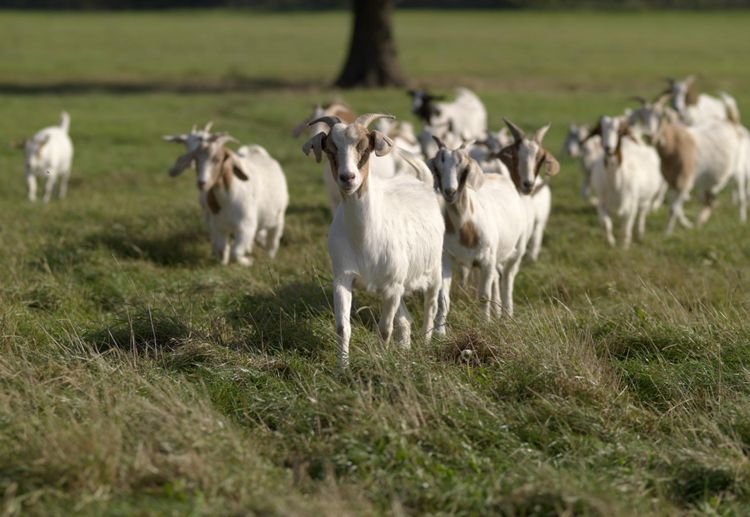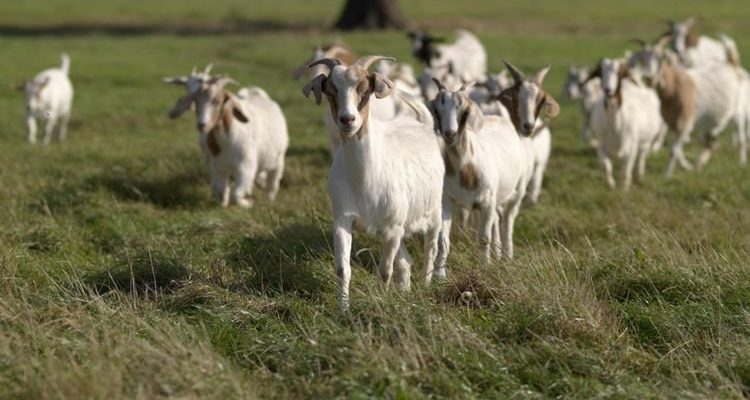
Alpine goats are known for their friendly personality and hardiness, making them a popular choice for both new and experienced goat owners. But they’re also quite active and curious, which means you need to consider a few key factors in their living environment. So, let’s grab a cup of coffee and explore what you need to know about housing and fencing for Alpine goats.
Understanding Alpine Goat Housing Needs
First off, let’s discuss the basics of what makes a good home for your Alpine goats. Just like humans, goats need shelter that protects them from the elements. Alpine goats are hardy animals, but they still require a clean, dry space to stay comfortable throughout the seasons. Ideally, their shelter should provide protection from rain, snow, and harsh sunlight.
You might wonder, how big should the shelter be? A good rule of thumb is to allow about 15-20 square feet per goat inside the shelter. If you’re planning to keep a group of goats, make sure there’s enough room for all of them to lie down comfortably without stepping on each other. Think of it as a cozy living room where they can unwind and relax together.
Good ventilation is also crucial. Goats are prone to respiratory issues if their living space gets stuffy or damp. Ensure there are windows, vents, or openings that allow for fresh air circulation. Just imagine how you would feel in a musty room—definitely not great, right?
Creating a Safe and Comfortable Environment
Now that we’ve covered the basics of size, let’s talk about the interior setup. Your Alpine goats will need bedding to stay comfortable. Straw or wood shavings make excellent bedding choices because they provide insulation and absorb moisture. You might be wondering how often you need to change it out; typically, a clean-up every week or two is good, depending on your goats’ activity level.
Additionally, consider adding a few sheltered spaces within the shelter. This could be as simple as a few hay boxes or stacks of straw where they can snuggle up. Goats enjoy having a space they can retreat to, much like how we might feel cozy in our favorite corner of the couch. It also helps to keep them feeling secure and reduces stress.
Lastly, make sure the shelter is safe from predators. Adding sturdy doors and windows, and securing any openings with strong fencing or wire, can go a long way in protecting your goats. Trust me, you wouldn’t want to find out the hard way that a predator got in because of a loose panel.
The Importance of Fencing for Alpine Goats
Now, let’s dive into fencing, which is just as vital as housing for Alpine goats. Goats are notorious for their escape artistry; they’re crafty little creatures! A good fence is your first line of defense against unwanted adventures.
When choosing fencing, aim for a height of at least 4-5 feet. This might sound a bit tall, but goats can jump surprisingly high, especially when they’re feeling playful. Stock fencing combined with barbed wire or electric fencing can work well. Just imagine your goats bouncing around like it’s a goat gymnastic event—keeping them contained is key!
Another thing to consider is the type of material. Woven wire and high-tensile fencing are popular choices since they provide good visibility and security. It’s a bit like having a solid wall around your garden, but one that still lets you see the beautiful flowers without letting pesky rabbits munch on them.
Also, check for gaps or weak spots regularly. If you find any, fix them immediately. Goats can squeeze through surprisingly small openings, so take the time to inspect your fence.
Additional Shelter Features for Alpine Goats
While the basics are crucial, a little extra touch can go a long way in making your goats feel at home. One idea is to include run-in sheds. These are structures that allow goats to retreat from sun or rain without being entirely confined. Imagine having a covered porch where you can hang out while still enjoying the outdoors—that’s what a run-in shed can offer your goats!
You might also consider adding shade trees or natural cover outside their fenced area. Goats love to browse and will appreciate the opportunity to munch on some branches and leaves. It’s like a buffet right in their backyard, plus it gives them a sense of adventure!
Water is another essential feature. Ensure you have a clean, fresh water source available at all times. You can use a water trough or a bucket, but keep an eye on it daily to make sure it’s clean and full. Goats can be a bit picky—they won’t drink murky water!
Understanding Goat Social Needs
Alpine goats are social animals, so housing them alone isn’t ideal. They thrive in herds, and having companions helps reduce stress and anxiety. If you’re planning to keep Alpine goats, consider getting at least two. Think of them as best buddies who share everything, from snacks to cuddle time.
In addition to having companions, make sure their living space encourages interaction. Provide climbing structures or platforms to allow them to play and explore. It’s like a mini playground, and goats love to climb!
You might be thinking, “What if one goat gets sick?” Ideally, you want to monitor them closely. A smaller herd can help you notice when one isn’t acting like themselves. Regular check-ups on your goats’ health are part of being a responsible owner.
Seasonal Considerations for Goat Housing
As seasons change, so do the needs of your Alpine goats. In winter, think about adding insulation to their shelter. During those chilly months, temperatures can dip, so keeping their living space warm is vital. You can use straw bales or insulated panels to help with this.
In the summer, shade becomes crucial. Make sure they have enough shaded areas to cool off during the hottest hours of the day. Goats can get overheated, just like we do when it’s sweltering outside. Regular access to water and shade will keep them happy and healthy.
Rain can also impact your goats’ environment. Ensure their shelter stays dry and that water doesn’t pool around their living area. Goats don’t like muddy conditions, and excessive wetness can lead to health issues.
Budgeting for Housing and Fencing
Lastly, let’s talk about budgeting for your goats’ housing and fencing. It’s easy to get caught up in the excitement and overlook the costs. A good goat shelter can range from a few hundred to over a thousand dollars, depending on size and materials. Think of it as an investment in your goat’s happiness.
Fencing also varies in price, depending on the type you choose. While it might be tempting to go for the cheapest option, remember that a durable fence will save you money in the long run by preventing escape or damage from predators.
Consider setting aside some extra funds for maintenance. Regular checks on your fence and shelter can prevent larger issues from arising. It’s like regular maintenance for your car; a little upkeep goes a long way!
In conclusion, providing the right housing and fencing for your Alpine goats is essential to their overall health and happiness. From cozy shelters to secure fences, every aspect plays a role in keeping your goats safe and thriving. Once you’ve got your setup sorted, you’ll be on your way to enjoying the delightful companionship that these wonderful animals bring to your life.

